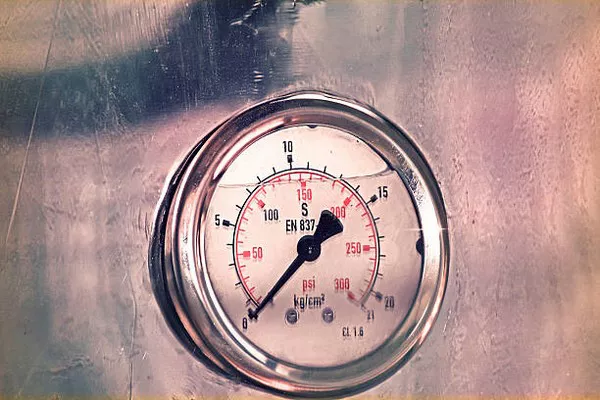Barometers are essential instruments used in meteorology to measure atmospheric pressure. They play a vital role in predicting weather patterns and understanding the dynamics of the atmosphere. This article will delve into what constitutes a normal barometer reading, its significance, and how variations can impact weather forecasting.
What is Atmospheric Pressure?
Definition and Importance
Atmospheric pressure is defined as the weight of air molecules exerting force on a given area at any point in the Earth’s atmosphere. It is measured in units such as pascals (Pa), millibars (mb), or inches of mercury (inHg). Normal atmospheric pressure at sea level is about 1013.25 hPa (hectopascals) or 29.92 inHg. This standard is known as standard atmospheric pressure.
Atmospheric pressure is crucial for various reasons, including:
Weather Prediction: Changes in atmospheric pressure can indicate upcoming weather changes. A drop in pressure usually suggests that a storm may be approaching, while rising pressure often indicates fair weather.
Flight Operations: Pilots rely on accurate barometric readings to ensure safe takeoffs and landings. Pressure variations can affect altitude readings and the aircraft’s performance.
Health Implications: Sudden changes in atmospheric pressure can impact individuals with certain health conditions, such as migraines or respiratory issues.
The Mechanics of a Barometer
Types of Barometers
There are several types of barometers, with the most common being:
Mercury Barometers: This traditional type consists of a glass tube filled with mercury, which rises or falls based on atmospheric pressure changes. The height of the mercury column directly correlates to the pressure, measured in inches of mercury.
Aneroid Barometers: These devices use a small, flexible metal box (aneroid cell) that expands or contracts with changes in pressure. They are more portable than mercury barometers and are widely used in homes and by meteorologists.
Digital Barometers: These modern instruments utilize electronic sensors to measure pressure and display readings digitally. They often include additional features such as weather forecasting and altitude measurement.
Calibration and Readings
Barometers need to be calibrated to ensure accurate readings. Calibration involves adjusting the barometer to account for the altitude at which it is being used. For example, a barometer located at a higher elevation will show a lower pressure reading than one at sea level.
Normal Barometer Readings
So, what is considered a normal barometer reading?
At Sea Level: The standard atmospheric pressure at sea level is approximately 1013.25 hPa (or 29.92 inHg). This is the baseline from which all other readings are compared.
Variations: Normal readings can vary based on geographical location and altitude. For instance, a reading between 980 hPa and 1050 hPa is generally considered normal for many regions. However, readings below 980 hPa are often associated with stormy weather, while those above 1050 hPa typically indicate fair weather.
Factors Influencing Barometer Readings
Weather Systems
Barometric pressure fluctuates due to various weather systems, including:
High-Pressure Systems: Associated with descending air, these systems generally bring clear skies and stable weather conditions. In high-pressure areas, barometer readings tend to be higher than normal, often exceeding 1020 hPa.
Low-Pressure Systems: These systems occur when air is rising and cooling, leading to cloud formation and precipitation. In low-pressure areas, barometer readings drop below 1000 hPa, indicating potential storms or unsettled weather.
Seasonal Changes
Seasonal variations can also impact barometric pressure readings. For instance:
Summer: High-pressure systems dominate during the summer months, resulting in higher-than-normal barometer readings.
Winter: In winter, cold air masses can lead to lower pressure readings as they displace warmer air.
Altitude Effects
Altitude significantly influences barometric readings. As altitude increases, atmospheric pressure decreases. Therefore, a barometer at a higher elevation will naturally show lower readings than one at sea level.
Adjusting for Altitude: To obtain accurate data, it is essential to adjust the reading according to the altitude where the barometer is located. This adjustment allows for a meaningful comparison between different locations.
Interpreting Barometric Readings
Daily Changes
Barometric pressure can fluctuate throughout the day due to various factors, including temperature changes and weather patterns. Monitoring these daily changes can provide valuable insights into upcoming weather conditions.
Long-Term Trends
Analyzing long-term barometric trends can offer a more comprehensive understanding of regional climate changes. For example, sustained periods of low pressure may indicate an increase in storm activity, while prolonged high pressure could suggest drought conditions.
Using Barometer Readings for Weather Forecasting
Meteorologists use barometric readings in conjunction with other meteorological data to predict weather patterns. Here’s how they do it:
Pressure Gradients: A steep pressure gradient (a significant difference in pressure over a short distance) often leads to stronger winds and storm systems. Conversely, a gradual gradient typically indicates calmer weather.
Historical Data: By comparing current readings with historical data, meteorologists can identify trends and patterns that help in forecasting.
See Also Anemometer Vs Windvane: What Is The Difference
Conclusion
Understanding normal barometer readings is essential for interpreting weather conditions and making informed decisions based on atmospheric pressure changes. Normal readings typically hover around 1013.25 hPa (29.92 inHg) at sea level, but variations occur due to altitude, geographical location, and weather systems.
Monitoring barometric pressure can offer insights into upcoming weather changes, and recognizing the factors that influence these readings is crucial for accurate forecasting. As technology advances, barometers become more sophisticated, allowing for better accuracy and usability in both professional and personal settings.
By understanding the significance of barometric readings, individuals can gain a deeper appreciation for the science of meteorology and the factors that shape our weather patterns. Whether for aviation, outdoor activities, or simply planning a day out, knowing what constitutes a normal barometer reading can help make informed choices in daily life.
You Might Be Interested In

